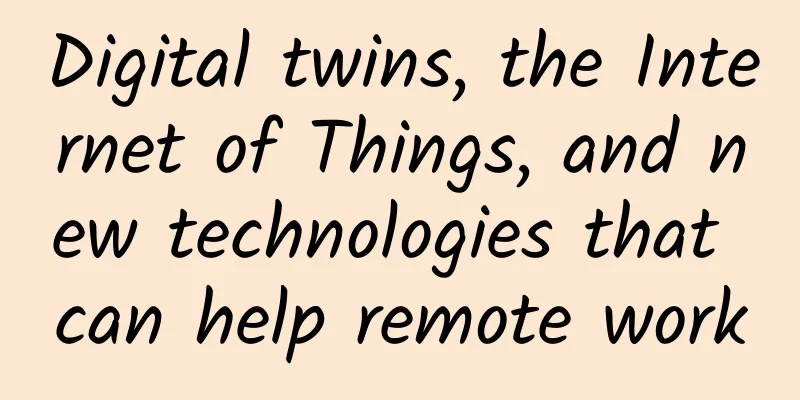When it comes to data transmission, 5G is just the beginning

|
If there’s a technology that’s tailor-made for the world we’re currently living in, it’s 5G. Everything we do seems to be based on the need for speed and connectivity. High bandwidth and low latency allow hospital doctors working in remote ICUs to communicate with and send information back to their main campus quickly. 5G will also be invaluable in smart cities with dense networks of devices that need to communicate and share information in real time. Then there are the more everyday tasks that power our lives, like video conferencing and more.
But while 5G has the potential to be the engine that moves all the individual bits and bytes in these examples, what is really happening to those bits and bytes? How can we take advantage of 5G infrastructure? Move data faster The answers to these questions lie in how data is handled as it moves across 5G networks. Enterprise organizations will need an intelligent data services architecture that enables them to access and transmit data from multiple sources. Ideally, this architecture will consist of automated data pipelines that connect edge and core locations and run on a flexible and open infrastructure that supports multiple clouds. Underlying all of this is the 5G network that will drive data movement between point A and point B, and to multiple other points as necessary. The combination of automated data pipelines and flexible serverless cloud computing infrastructure is well suited to the kinds of data-intensive use cases that 5G intends to support. Serverless computing, made popular by Kubernetes-based platforms and the open source project Knative, does double duty, accelerating application development and supporting large-scale data workloads without running resources 24/7. The serverless edition includes a feature called “Events,” where events are triggered as data flows into a workflow and across a data pipeline. In that pipeline, data is placed into a unique bucket and analyzed in real time as it is ingested (first event). This solves the pesky data locality problem, where data is located close to the compute. This helps eliminate the need to send data in batches from edge locations to the core. Upon discovery, that data is immediately placed into another bucket (second event), then another (third event), and so on until it reaches its final destination. Providing critical information in emergency situations To illustrate this, let’s consider a potential use case that may be all too familiar to some of us. Imagine a hurricane has just hit the coast, causing miles of damage. The insurance adjuster responding to the cyber disaster is located at the edge of the network. The photos and videos she takes are automatically transmitted back to the remote office via 5G. Before they go, they need to be inferred for real-time processing and analysis. The initial results will be delivered to the core location for deeper machine learning and training, and the findings will be pushed back to the edge. As the model becomes smarter, the system will be able to use image recognition at the edge location to automatically create and deliver estimates. All of this can happen very quickly due to the serverless nature of the infrastructure and automated pipeline. And with 5G, the speed of transmission can be very fast - close to real time. Only move what is necessary To sum up, moving data is always less than ideal. It can reduce productivity and cost a lot of money, especially when the information reaches terabytes or even higher. Even with 5G, this type of data transfer will still be expensive from a financial and productivity perspective. Instead, organizations can choose to simply move subsets of their data. This is especially true in industries subject to regulatory constraints. For example, an automaker needs to retain certain video data sets collected by its self-driving cars. They can only transfer that data from the edge to the core and discard the remaining information locally that does not need to be retained. These types of organizations will want to consider implementing a platform that supports high-performance data streaming and the rapid exchange of large data volumes. They need to be able to categorize, tag, and potentially store data. The developers working on the open source Kafka project have done some excellent work in this regard. Bringing 5G Home 5G will be a cost-effective game changer by providing a communications infrastructure that offers a high-speed, reliable way to enable true data availability from anywhere. Moving data from an exponentially increasing number of devices to the edge of the network for processing will enable 5G to improve efficiencies in agriculture, energy, manufacturing, and many other industries. Reducing latency in data movement will open new opportunities to improve health and safety. And, moving more data faster will enhance experiences like streaming, conferencing, and augmented reality. However, mobile networks are just the beginning. Organizations will need the right infrastructure and intelligent data service architecture to drive the value of the 5G Home — whether “home” means the edge, the core, or both. |
Recommend
How to fill every corner of the room with Wi-Fi?
Nowadays, in a large living environment, there ar...
Justhost newly launched New York VPS, multiple data centers in the United States/Russia/UK/Germany/Hong Kong, China, etc. starting from $1.16/month
JustHost.asia sent information about the new VPS ...
Interviewer: Can you tell me what are the commonly used network models?
Network I/O models are the policies and mechanism...
RAKsmart: US VPS starting from $1.99 per month, supports Windows, optional premium network/mainland optimization
I have shared information about RAKsmart many tim...
Wu Hequan, Academician of the Chinese Academy of Engineering: The communications industry needs to adjust its development strategy
August 30 news: The 9th "International Sympo...
How will the emergence of 5G affect AI federated learning?
As development teams scramble to build AI tools, ...
Finally someone explained traffic operation clearly
[[428404]] This article is reprinted from the WeC...
Migrate WHM/cPanel data to DA (DirectAdmin)
I shared an article about migrating from CP to DA...
Deutsche Telekom expects 5G network to cover 50% of the German population by 2022
Telefénica/O2, the German telecom operator contro...
SpartanHost: Seattle high-security KVM starting at $2 per month, 256M memory/20G hard drive/1TB traffic
SpartanHost is a foreign hosting company founded ...
HostXen offers 50 yuan for new users, starting from 70 yuan per month for 6G memory in the United States/Singapore/Japan/Hong Kong
HostXen is a domestic hosting merchant founded in...
In 2017, more than 200 operators around the world planned to incorporate 5G network architecture elements into their 4G networks.
[[182055]] Deloitte’s Technology, Media and Telec...
IPv6: Why should I make up for the mistakes made by IPv4?
IPv6 should have been developed greatly in the pa...
5G commercialization in its third year: a new prosperity
"As of the end of September, the total numbe...









